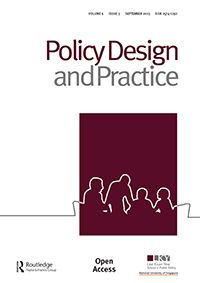The Nepali diaspora’s role in national development
IF 2.6
Q1 PUBLIC ADMINISTRATION
引用次数: 0
Abstract
Abstract United Nations data shows that the number of global diaspora had reached 281 million in 2020, and it continues to grow. Diasporas have contributed significantly to the development of their native lands through remittance, technology and knowledge transfer, philanthropy, and diplomacy. Many countries have designed policies to engage the diaspora more deeply by providing concessional citizenship and visa regimes, and attractive investment opportunities. Yet, there is room for improvement in policies and programs to enhance these prospects. Since the 2010s, the size and expanse of Nepali diaspora has grown dramatically, the number of permanent expatriates in the more developed parts of the world reaching about 800,000 in 2022. In addition, at any time, there are 2–3 million temporary migrants from Nepal working in foreign countries outside of India. With the enhanced level of education and experience, and their growing economic prowess, the Nepali diaspora is in a strong position to become a significant partner in Nepal’s development efforts. The diaspora’s potential contribution to Nepal’s development remains vastly underutilized for mainly two policy-related reasons. The Nepali government’s supporting policies, regulations, and programs to effectively engage the diaspora are inadequate. The diaspora groups too have not been able to fully assess and chart out their capacities, and create proper institutional, and policy mechanisms to mobilize their resources. This paper reviews some examples of diaspora in development, and the current situation of the Nepali diaspora, and provide recommendations for improving the strategies, policies, and programs both for the diaspora, and the Nepali government, and for similar developing countries.尼泊尔侨民在国家发展中的作用
联合国的数据显示,到2020年,全球散居海外的人数已达到2.81亿,而且还在继续增长。侨民通过汇款、技术和知识转移、慈善事业和外交,为祖国的发展做出了重大贡献。许多国家制定了政策,通过提供优惠的公民身份和签证制度以及有吸引力的投资机会,更深入地吸引海外侨民。然而,改善这些前景的政策和方案仍有改进的余地。自2010年代以来,尼泊尔侨民的规模和范围急剧增长,到2022年,尼泊尔在世界较发达地区的永久侨民人数将达到约80万。此外,在任何时候,都有200万到300万尼泊尔临时移民在印度以外的国家工作。随着教育水平和经验的提高,以及他们日益增长的经济实力,尼泊尔侨民处于强有力的地位,可以成为尼泊尔发展努力的重要伙伴。侨民对尼泊尔发展的潜在贡献仍未得到充分利用,主要有两个与政策有关的原因。尼泊尔政府的支持性政策、法规和项目不足以有效地吸引海外侨民。散居海外群体也未能充分评估和规划其能力,并建立适当的体制和政策机制来调动其资源。本文回顾了海外侨民在发展中的一些例子,以及尼泊尔侨民的现状,并为海外侨民、尼泊尔政府和类似的发展中国家提供了改进战略、政策和计划的建议。
本文章由计算机程序翻译,如有差异,请以英文原文为准。
求助全文
约1分钟内获得全文
求助全文
来源期刊

Policy Design and Practice
PUBLIC ADMINISTRATION-
CiteScore
10.30
自引率
4.30%
发文量
19
审稿时长
13 weeks
期刊介绍:
 求助内容:
求助内容: 应助结果提醒方式:
应助结果提醒方式:


